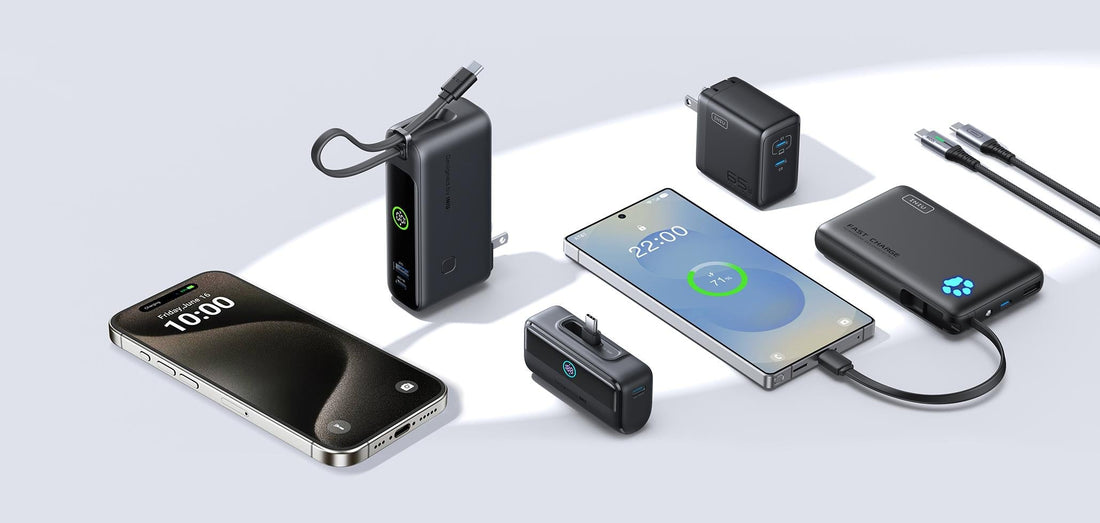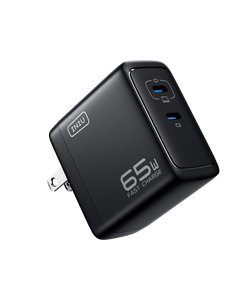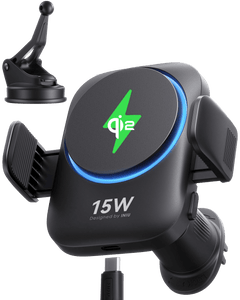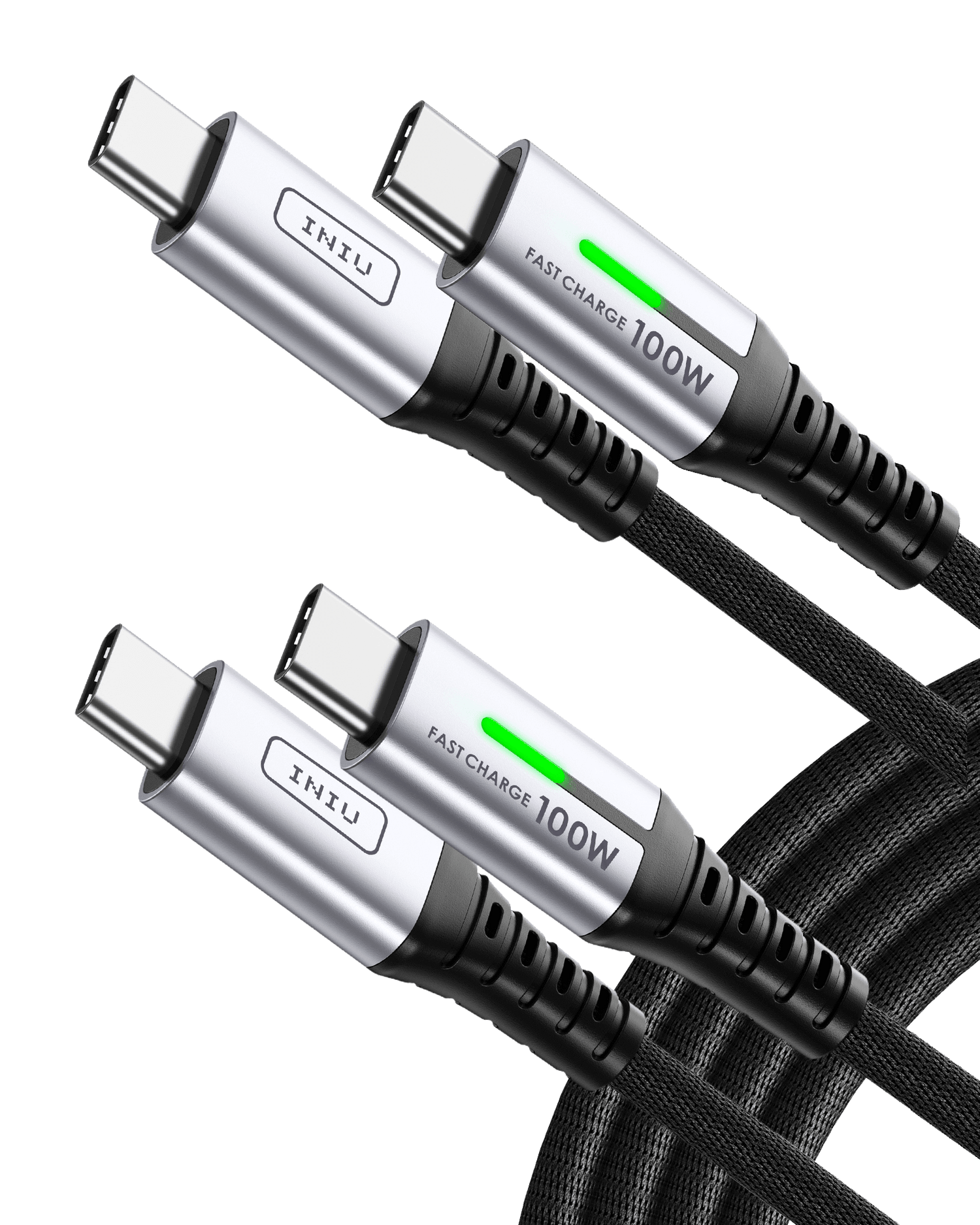
Is It Safe to Use Your Phone While It's Charging? The Definitive Answer
The question is common. The answer is yes, using your phone while it charges is generally safe. Your immediate safety is not the main concern. The real issue involves the long-term health of your phone's battery. The quality of your charging equipment and your usage habits are what truly matter. They determine both safety and how long your battery will last.
The Short Answer: Yes, It's Safe—With the Right Equipment
Modern phones are built to handle use during charging. Your safety, however, depends almost entirely on the quality of your phone charger and cable. Certified accessories are key to a safe experience.
Modern smartphones have advanced power management systems. These systems cleverly direct electricity where it needs to go. When you plug in your phone, the power from the wall can run the device directly. Any extra power goes to the battery. Once the battery is full, the system stops sending power to it and runs the phone solely from the charger.
This process is safe, but only with proper equipment. Certified chargers and cables have passed strict safety tests. Organizations like Underwriters Laboratories (UL) test for fire and shock hazards. In contrast, cheap, uncertified chargers are a significant risk. They often skip essential safety components. A faulty phone charger can overheat, damage your phone's battery, or even cause a fire. The danger comes from the equipment, not from the act of using your phone.
Myth Busted: The Risk of Electrocution is Near Zero
Stories about electrocution from a charging phone are alarming. Fortunately, with certified equipment, the scientific reality is much less frightening. The design of a proper phone charger protects you from harm.
A phone charger is a power adapter. It converts the high-voltage alternating current (AC) from your wall outlet into low-voltage direct current (DC) for your phone. A certified charger has built-in electrical isolation. That separation prevents the high voltage from ever reaching the phone or the cable. The voltage that comes out of your charger is very low, usually between 5 volts and 12 volts for a fast charger. That level of voltage is not strong enough to push a dangerous electric current through your body.
Most incidents of shock or fire involve two things: a faulty, damaged, or uncertified charger and often, water. A cheap charger might lack proper insulation. If it's damaged, high-voltage components could become exposed. Water can then create a path for electricity to travel, which is extremely dangerous. With a certified, undamaged charger used in a dry environment, the risk is practically nonexistent.
The Real Enemy: How Heat Silently Degrades Your Battery
Now that we have addressed the safety myths, let's focus on the real threat to your phone. Heat is the silent enemy of your battery. It slowly and permanently reduces your phone's lifespan.
Your phone uses a lithium-ion battery. These batteries work because of a chemical reaction. That reaction is very sensitive to temperature. The ideal operating temperature for most phone batteries is between 62°F and 72°F (16°C to 22°C). When a battery gets too hot, typically above 95°F (35°C), its internal chemical reactions speed up. This acceleration causes permanent damage. The electrolyte inside can break down. A protective layer on the electrodes, called the Solid-Electrolyte Interphase (SEI), grows too quickly. That growth increases internal resistance and reduces the battery's ability to hold a charge. The damage is irreversible.
Heat comes from two main sources. Internal heat is generated from the phone's processor (CPU) and graphics chip (GPU), especially during intense activities like gaming. The charging process itself also creates heat. External heat comes from the environment, like leaving your phone in a hot car or in direct sunlight. Charging your phone under a pillow also traps heat and is very harmful. The combination of a high charge level and high temperature is particularly damaging, as the following table illustrates.
| Temperature | State of Charge (SoC) | Estimated Capacity Loss in One Year |
| 25°C (77°F) | 40% | ~4% |
| 25°C (77°F) | 100% | ~20% |
| 40°C (104°F) | 40% | ~15% |
| 40°C (104°F) | 100% | ~35% |
Why Is My Phone Slow and Charging Sluggishly?
Have you ever noticed your phone becoming slow or laggy while charging and playing a game? That slowdown is not a defect. It is your phone's built-in defense system working to protect itself.
When you use your phone while it is plugged in, the power management system has to do two jobs at once. It sends some power to run the screen, processor, and other components. It sends the rest of the power to the battery. Because the power is divided, the battery charges more slowly than it would if the phone were idle.
Your phone also has temperature sensors. If the device gets too hot from the combined heat of usage and charging, it takes action. The system will automatically slow down the processor and graphics chip. That process is called thermal throttling. It reduces performance to lower the temperature and prevent damage to the internal components. You will notice the effects of thermal throttling directly. Games will start to stutter, videos might drop frames, and the whole device will feel sluggish. Additionally, the phone will also reduce the charging speed. A hot battery cannot accept a fast charge safely, so the power management system slows the current down, especially after the battery reaches 80% capacity.
Smart Charging Habits for a Longer Battery Lifespan
Understanding the risks is the first step. The next step is adopting better habits. These simple, practical tips will help you protect your phone's battery and extend its useful life.
Light Use Is Fine
It's fine to perform light tasks like texting, browsing the web, or listening to music while charging, as these activities don't generate significant heat and your phone can manage them without stressing the battery. However, avoid high-intensity tasks such as playing graphically demanding games, video editing, or using GPS for long periods while charging. These activities generate substantial heat, and when combined with the heat from charging, they create a damaging environment for your battery.
How to Choose and Identify Safe Charging Accessories
Always look for certification marks on the charger and its packaging. You can often spot fakes with a careful look. Counterfeit chargers may feel lightweight and cheaply made. Look for spelling mistakes or blurry logos on the packaging. The USB connector might fit poorly. Genuine products have a solid feel and professional packaging. For wireless chargers, look for the Qi logo and verify the product on the Home | Wireless Power Consortium.
| Certification | Full Name | Primary Purpose | How to Spot a Fake |
| UL | Underwriters Laboratories | Electrical safety (fire, shock) | Missing 4 elements (UL in circle, "LISTED", control number, product ID), poor quality |
| CE | Conformité Européenne | Meets EU health & safety standards | Incorrect logo dimensions, no technical file available from manufacturer |
| FCC | Federal Communications Commission | No harmful radio interference | No FCC ID on device, cannot be verified in FCC database |
| Qi | Wireless Power Consortium | Wireless charging safety & interoperability | Not listed in the WPC product database, poor performance, overheating |
Upgrade Your Phone Charger: Why a GaN Charger is a Better Choice
A great way to improve your charging experience is to use a gan charger. GaN stands for Gallium Nitride, a material that is much more efficient than the silicon used in traditional chargers. This higher efficiency produces a major benefit: less heat. Because a gan charger wastes less energy, it stays cooler while delivering power. A cooler charge is always better for your battery. The efficiency also allows these chargers to be much smaller and more portable. You can get a powerful fast charger that fits easily in your pocket. A gan charger is a smart upgrade for anyone.

Free Your Hands: Using a Wireless Charger Correctly
A wireless charger offers great convenience. You just place your phone on a pad, and it starts charging through a process called electromagnetic induction. Qi is the global standard for wireless charging. Using a wireless charger reduces wear and tear on your phone's physical charging port. It is also very convenient for topping up your battery throughout the day. Wireless charging can generate more heat than wired charging because it's less efficient. A certified qi wireless charger includes important safety features. One is Foreign Object Detection (FOD), which stops the charger from working if it detects metal objects like keys or coins, preventing them from heating up dangerously.
The Smart Charging Verdict: Safety First, Battery Life Second
To summarize, using your phone while charging is safe if you use certified equipment. The real consequence is not to your personal safety but to your battery's longevity. Always prioritize high-quality charging gear. Also, manage heat from heavy use to keep your battery healthy for as long as possible. A little care goes a long way.
FAQs about Phone Charging Safety
Q1: Is it bad to charge my phone overnight?
A: No, modern phones have systems that stop charging when the battery is full. It is safe. For the best long-term battery health, however, it is better to avoid keeping the battery at 100% for many hours every night.
Q2: Should I charge my phone to 100%?
A: It is not necessary. Lithium-ion batteries are happiest and degrade slowest when kept between 20% and 80% charge. Charging to 100% consistently puts more stress on the battery and accelerates its chemical aging.
Q3: Will a fast charger damage my battery?
A: A certified fast charger will not damage your phone. The phone's internal systems control how much power it draws. But, a fast charger does generate more heat than a standard one. That extra heat can contribute to faster battery degradation over months and years.
Q4: Can I use any phone charger with my phone?
A: You should not. Always use a phone charger from a reputable brand that has safety certifications like UL. Cheap, uncertified chargers can be dangerous. They can damage your phone or even cause a fire.
Q5: Why does my phone get hot when charging?
A: A little warmth is normal. Heat is a natural byproduct of the charging process. It can get warmer if you are using the phone for heavy tasks or using a fast charger. If the phone becomes uncomfortably hot to the touch, you should unplug it and let it cool down.





